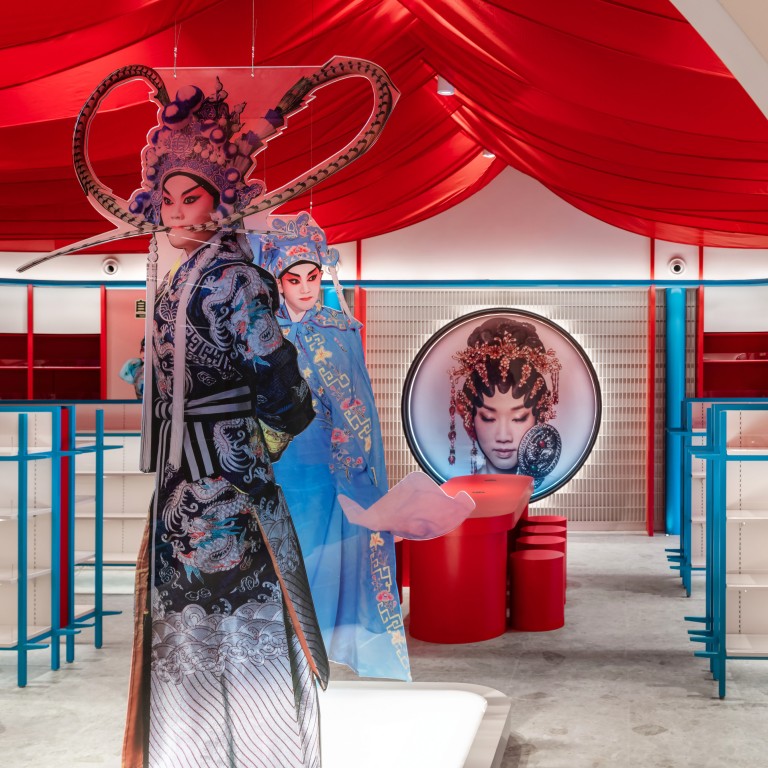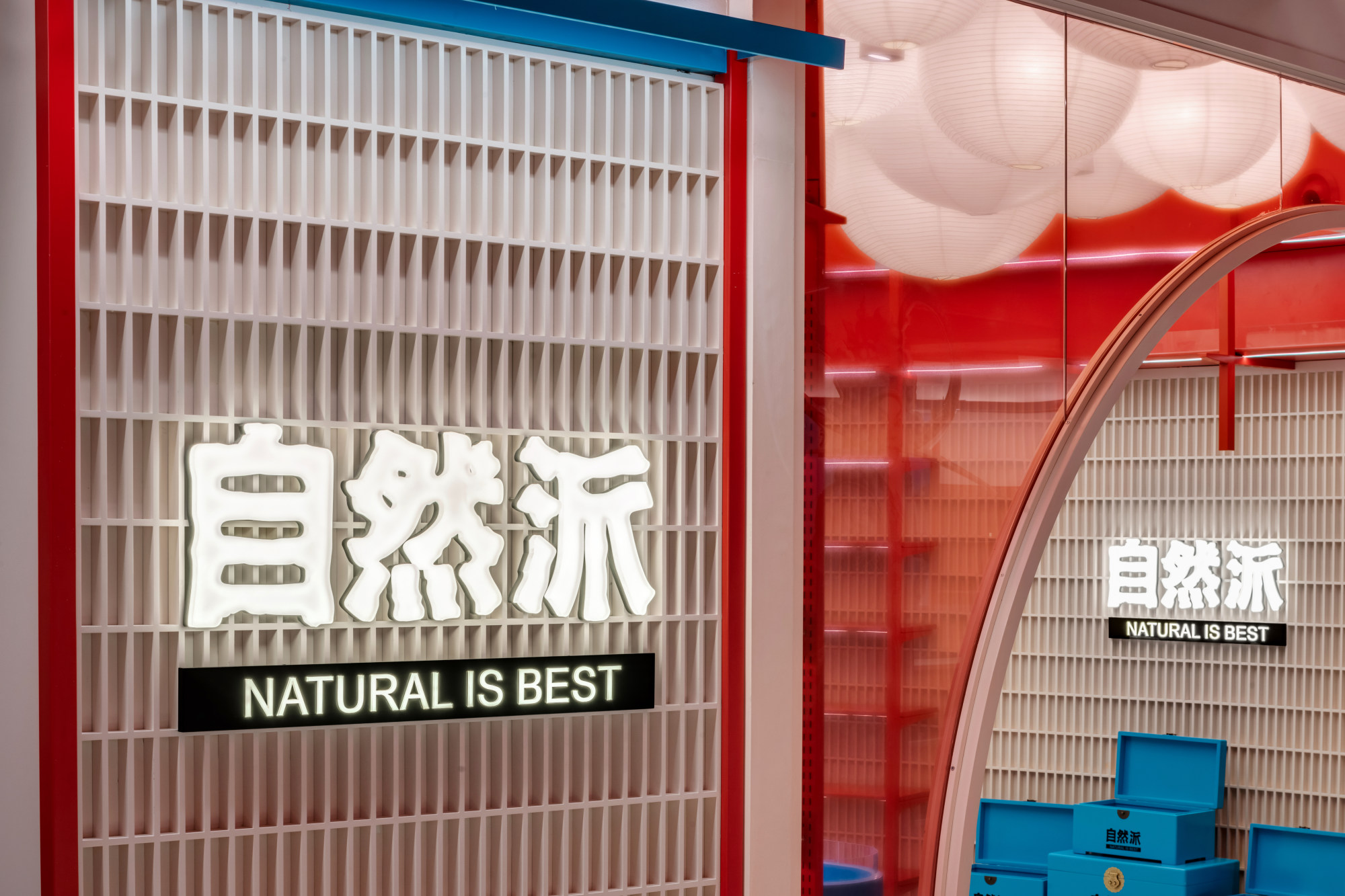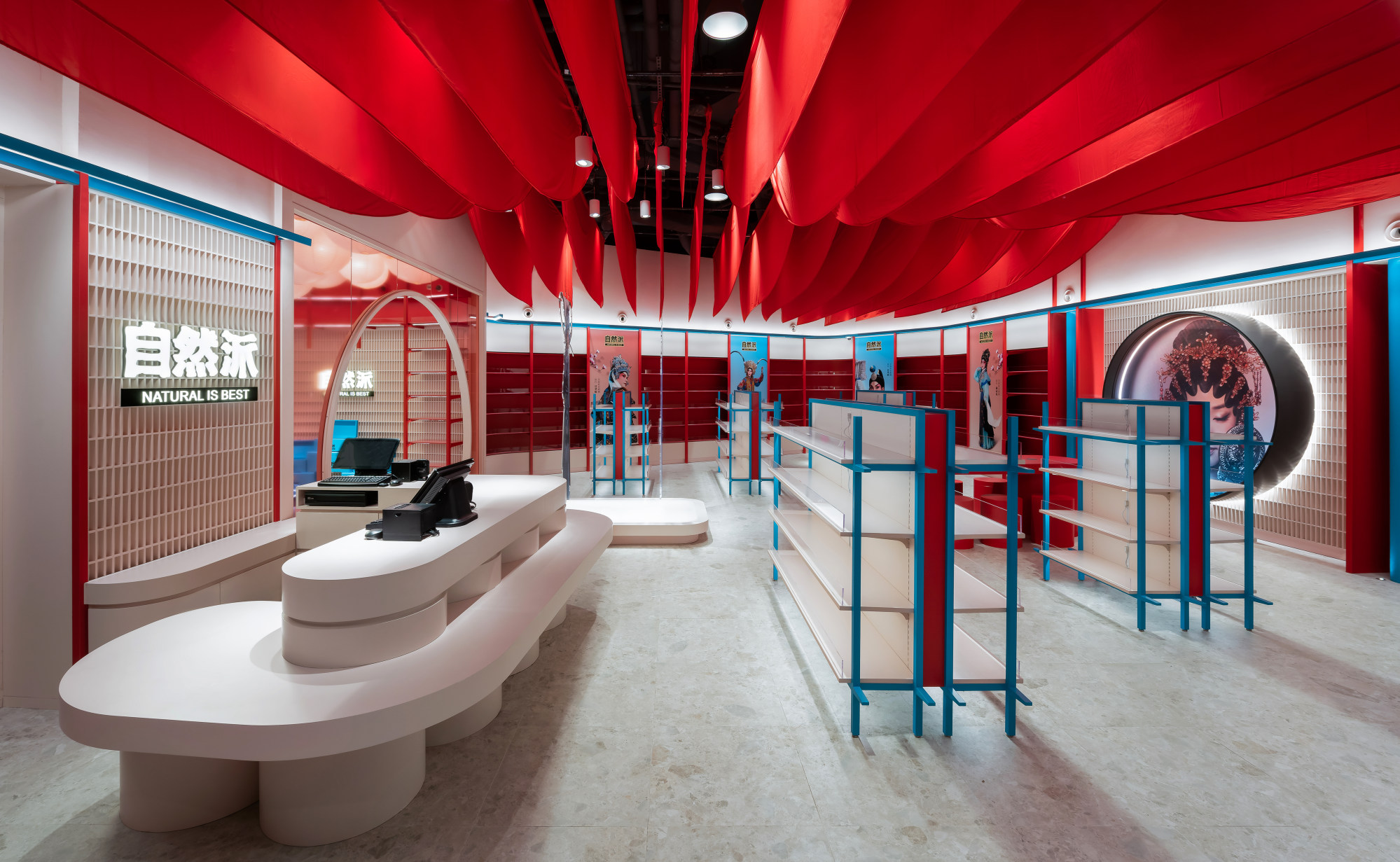
How a new Hong Kong snack shop’s design reflects Cantonese opera’s energy and deep roots
- The Natural is Best flagship shop at the West Kowloon Cultural District’s Xiqu Centre aims to capture the excitement and anticipation of an opera performance
- Colours and lighting reflect Cantonese opera’s theatrical atmosphere, while spatial features are influenced by traditional Chinese design
You might recognise Natural is Best from the snack chain’s countless outlets in malls and MTR subway stations around Hong Kong.
Then again, you might not – many of them fade into the background of the retail landscape. But not the company’s new flagship store, which opened in late August in the basement of the Xiqu Centre, in the West Kowloon Cultural District.
Inspired by the building’s vocation as a home to Chinese opera, Natural is Best hired Hong Kong architecture and interior design studio Metagram to come up with a design concept that reflects the art form’s distinct energy and deep roots.
“They knew we approach projects in an architectural kind of way, so rather than having a specific style, we realise projects according to concepts,” says Metagram director John Chow.

What struck Chow and his team was the store’s irregular space, with a narrow front section leading to a wider room at the back.
“One thing in Chinese design, especially in the olden days, is the use of an axis to define the layout of a city,” Chow says. “If you take the Forbidden City in Beijing, the entire city was set up around an axis.”
Metagram decided to approach the 1,420 sq ft (132 square metre) retail space like a miniature city.
How Hong Kong’s Kai Tak Sports Park aims to be part of people’s daily lives
A series of arches inspired by the moon gates of traditional Chinese gardens pulls visitors through the narrow entranceway and into the back room, where most of the shop’s products are on display.
Several features were positioned at the end of the axis. The first consists of two acrylic cut-out images of Cantonese opera performer Alan Tam striking a mischievous pose.
Behind them is a communal seating area dominated by a circular portrait – Chow calls it an oculus – of another opera performer, Christie To.
“The portrait is framed by columns to give it a formal appearance,” Chow says.

That took care of the shop’s spatial configuration. The next step was to come up with decorative elements to create an atmosphere that captured the excitement and anticipation of an opera performance.
Metagram opted for a bold palette of red, blue and off white, colours that have added significance in the various types of Chinese opera.
“One thing that was very evident about Cantonese opera and Peking opera is that there’s a certain formality about the way it’s performed – you have people dress up in certain colours or make-up and that would symbolise something about the way that character is portrayed,” Chow says.

Red symbolises bravery and blue stubbornness, he explains, while white symbolises evil – which is why, for the shop, the white was given a soft tinge of yellow, a colour that implies valiance.
“We really spent a long time fine-tuning the colour so that it would have the right aesthetic and thematic effect, and of course to ensure that it wouldn’t have any distinctly negative or distracting connotations that often come with the use of strong colours,” he says.
“We actually went through four or five different shades of blue before arriving at the final tone, but in the end everyone was quite happy. It’s quite a challenge to use such contrasting primary colours together effectively, and also in a cultural context.”

Complementing blue shelving units and display cases is a decorative assembly of crates in the same hue, which Chow says was inspired by the trunks that Cantonese opera troupes would use to store costumes and make-up when on tour.
A sea of off-white lanterns hangs above the shop entrance, giving way at the rear to red curtains suspended from the ceiling.
“It creates this amazing flowy atmosphere as the air conditioning blows,” Chow says. “The space has a really tall ceiling, so it was important to use that negative space above in order to modify and control the mood.”
Lighting was another way to set the scene.
“Light was extremely important in creating the theatrical atmosphere, so it was a core element in our design,” Chow says.
Greenery in the concrete jungle: architect brings nature into living spaces
“We worked very closely with Eugenia Cheng of LightOrigin Studio, a boutique architectural lighting design studio.
“Her involvement was critical in illuminating the different features, and achieving the right colours, particularly the lanterns in front which, in reality, take on a very warm white glow rather than a very sterile white appearance that can be uninviting.”
The designers also worked with the Chinese Artists Association of Hong Kong, an opera group, and Xiqu Centre head of performing arts Naomi Chung to understand the history and traditions of Chinese opera better.
For Chow, who was born in Penang, Malaysia, and raised in Sydney, Australia, it was a learning experience to plunge into the world of opera.
“The athleticism is spectacular and the vocal ability is challenging, to say the least,” he says.
It was extra motivation to create a space that is as captivating as one of the performances taking place upstairs.

